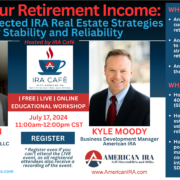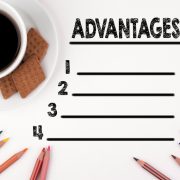What They Have Not Told You About Self-Directed IRAs: The Facts
If you have not heard of a Self-Directed IRA, does it mean that it is not a valid investment strategy? Of course not. There are lots of different ways people can achieve greater amounts of wealth and confidence in retirement and they do not all involve investing through a company-matched 401(k) that is invested in stocks and bonds. Self-Directed IRAs allow investors to go beyond that, investing in nontraditional assets like real estate, precious metals, tax liens, and more. And for many people, it is a great alternative that adds to more diversification and greater opportunity.
But what if you haven’t been told the facts? We thought we would clear the air about Self-Directed IRAs:
- More people use Self-Directed IRAs than you might imagine. When a lot of investors hear about Self-Directed IRAs, they tend to wonder. “If these are so great, why don’t more people use them?” The truth is that more people use them than you might think. When considering just how many people use retirement accounts because of benefits through work, it is amazing that even 5% of retirement accounts contain nontraditional investment assets. That means there are millions of retirement accounts that invest beyond the traditional CDs, stocks, and bonds.
- People have been using nontraditional assets for a long time. Many people are somewhat distrusting of retirement ideas that are unproven. The thing is nontraditional assets within retirement accounts are not As we note on our FAQs page, “the IRS and ERISA have allowed broader investment options since 1975.” That means there are many retirees out there, as you read this, enjoying a lifetime of investing with nontraditional assets. And many of the assets themselves—like real estate and precious metals—have a history that far exceeds any stock in the S&P 500.
- It is easy to convert from a traditional account to a Self-Directed IRA Many people avoid opening a Self-Directed IRA because they feel that they are so far into their current investment strategy that it would be too complicated to change. Not so. In fact, you can convert a 401(k) plan with a former employer into a Self-Directed Traditional IRA, for example. We usually recommend contacting your previous employer for this, to find out what the procedures are. In this way, you will not be limited to the investment strategy you were committed to while at a place of previous employment. And if you started your own business, for example, you can attain more freedom with your retirement investing.
- The same rules apply to Self-Directed IRAs. A lot of people get intimidated by the process of establishing a Self-Directed IRA because they view the rules as too complicated or difficult to understand. The truth is it is not all that complicated. A Self-Directed IRA is the same as any other IRA when it comes to the rules and the account types. A Traditional IRA, when Self-Directed, is still a Traditional IRA. Ditto for other types of retirement accounts. These rules always applied to you, but you never had to engage with them before. So, do not believe it when you hear people talk about how Self-Directed IRAs are infinitely more complicated because of all the rules.
When you use a Self-Directed IRA for retirement, you are in charge. You get to call the shots as to what types of investments you use, assets you include, and more. That is why it is so important to get involved with learning about Self-Directed IRAs and using that education to expand your base of knowledge for your investments. Want to find out more? Contact us at 866-7500-IRA today.
Interested in learning more about Self-Directed IRAs? Contact American IRA, LLC at 866-7500-IRA (472) for a free consultation. Download our free guides or visit us online at www.AmericanIRA.com.







